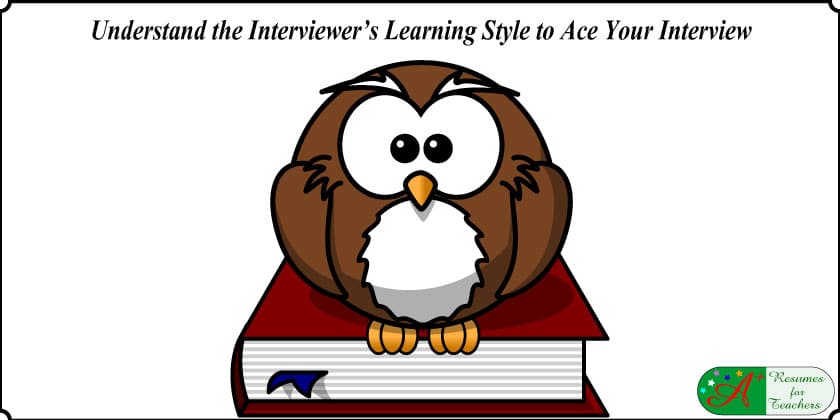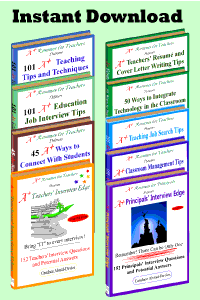The interviewer’s learning style will have some bearing on your interview success. If you have experience teaching, you’ve probably spent time focusing on tailoring lessons to your students’ learning styles. This skill proves surprisingly useful when you go to a teacher job interview as well.
If you understand the interviewer’s learning style, you can better connect, whether auditory, visual, or kinesthetic/tactile. If you offer variety during your teaching interview to ensure that each learning style is addressed, you are more likely to make a positive connection with the interviewer or panel.
Nowadays, teacher interviews incorporate different learning styles because they want to know more than just your answers to certain questions. For instance, many interviews will require you to conduct a short sample lesson so they can see how you teach. You are also often expected to bring your teaching portfolio with you to show examples of your work.
Interviewer’s Learning Style Types
New aspects of making a teacher interview more collaborative allow you to consider the interviewer’s different learning styles. This advantage will help to engage your interviewer much the same way you would engage your students.
Visual Learners
You can show your portfolio to visual learners, give a PowerPoint presentation if you get the opportunity, or demonstrate a lesson if necessary. As stated above, many interview styles now incorporate a lesson demonstration portion where you are allowed to demonstrate your teaching abilities.
When given this opportunity, teach exactly how you would in a classroom – don’t be intimidated by the interviewers. Involve them in the lesson like they are your students. Bring visual aids for your lesson to better illustrate the lesson concepts through a PowerPoint presentation or diagrams, handouts, posters, etc.
If there is no opportunity to demonstrate a lesson, bring in your teaching portfolio to show the interview panel. This is a great way to show the interviewers your capabilities through concrete examples of your former work. You can include pictures of your classroom, past student work examples, and examples of your most successful lesson plans.
Always tailor your interview responses to meet the needs of the school, college, or organization. Researching the school will be critical to responding to the school needs at the forefront effectively.
Auditory Learners
For auditory learners, your strength will be the way you answer questions. This is the traditional form of an interview, so this is the easiest learning style to accommodate during an interview. Ensure that your answers to the questions are clear and detailed enough to provide the interviewer with enough information.
For instance, if it’s a behavioral interview question, you need to answer the question specifically as to how you would respond to the situation they’ve outlined. If you can paint a clear picture for the interviewer of how you would handle certain situations in your classroom, this will work best with auditory learners. And as in all interviews, it is always best to prepare your answers ahead of time by practicing at home.
Kinesthetic Learners
If you demonstrate a lesson, it will be easy to show you can address the kinesthetic learners by getting the interviewer(s) involved in activities.
After introducing the lesson and the concept you are teaching, include a short activity that would allow ‘students’ to practice the skill. This way, your kinesthetic interviewers will be able to participate in your lesson and see how successful you are at including kinesthetic learners in your lessons.
Understanding how to modify your lessons and teaching method to reach different learning styles will influence your teaching and students’ success. Sharing your knowledge and examples in this area will help the interviewer(s) learn the value you can bring to their campus. Try to tie in small touches of each learning style as you plan for your next interview for your dream teaching job.


